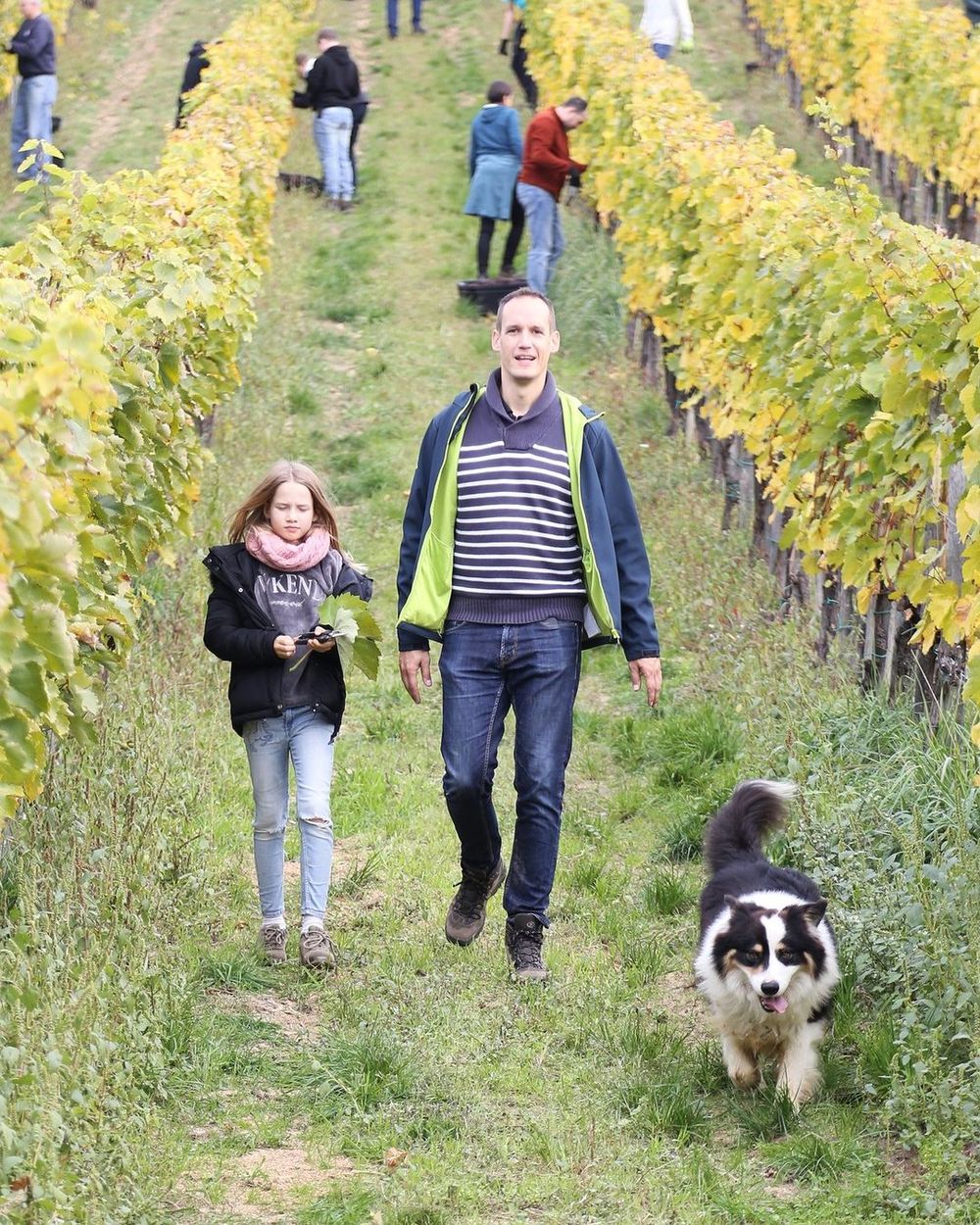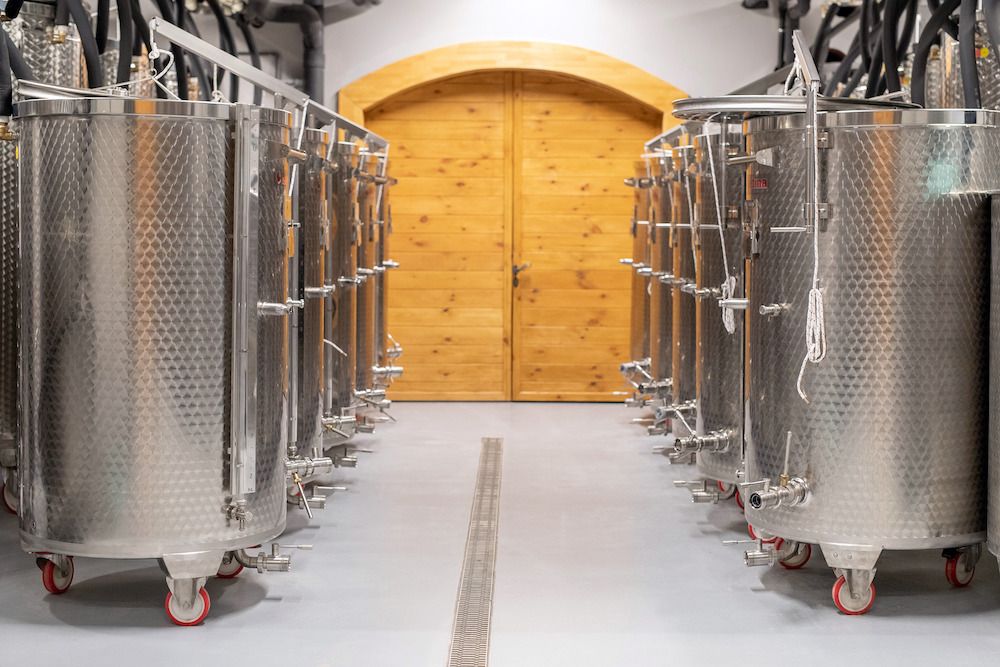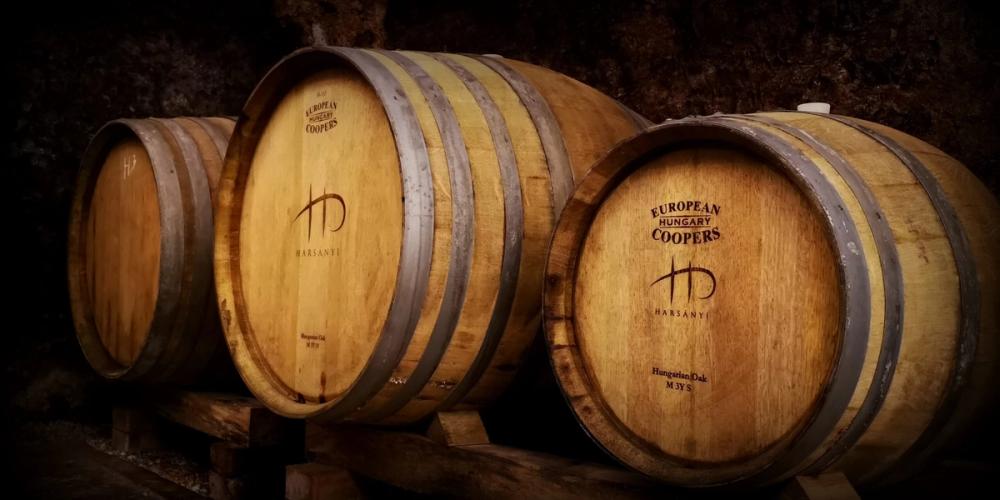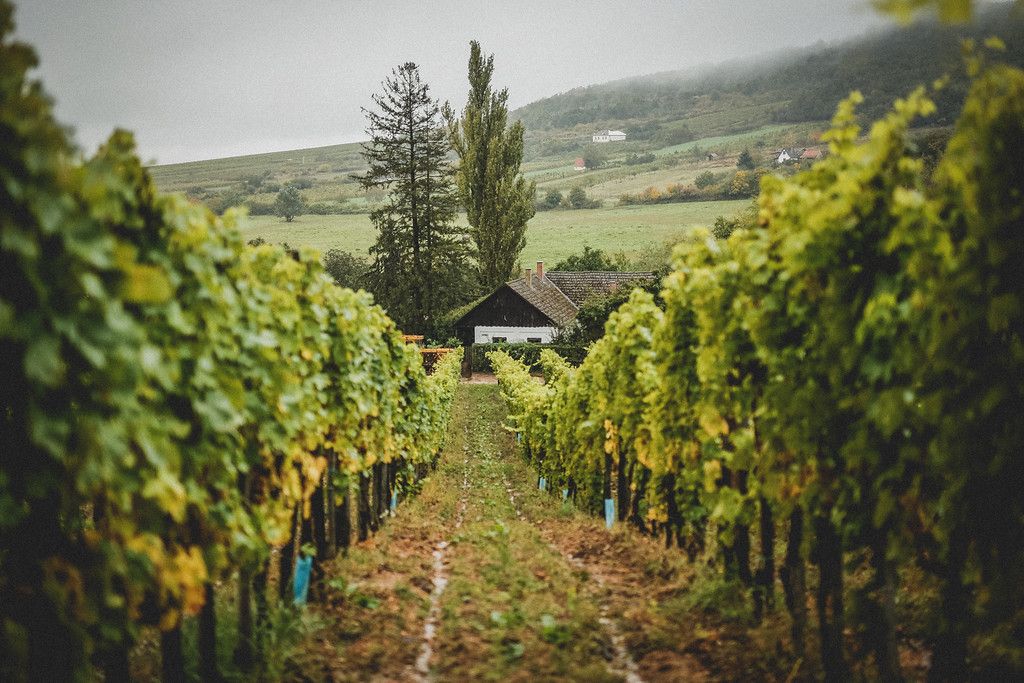“The story of the Harsányi family, the vineyards and the future of the region’s wines is a compelling one,” writes Mason. “Freed from the oppressions of the Soviet era, the region and the country are revelling in a renaissance.”

Gábor Harsányi has overseen a full conversion to organic viticulture
Tokaj is the winemaking region predominantly known for its history of making superb, sweet wines but the winds and wines have been changing of late. 163-year old family-owned Harsányi is a good example of a winery here that is on the cusp of these changes as it keeps one foot in its traditional past and embraces the future.
Harsányi is nestled amongst four large slopes in the Dűlű hills. Four sites amongst 12 hectares of organic vineyard, creating a broad palette of single vineyards from which to sculpt exceptional wines. This natural amphitheatre serves as a haven for farming perfectly ripe Furmint, Hárslevelűand Muscat Lunel grapes for the production of both dry, late harvest and sweet wines.
The Tokaj region is borne from seismic volcanic activity over the course of millennia, resulting in an unique array of rocks and soil types, all key to the winemaking here. In fact, head of the Harsányi winery, Gábor Harsányi, believes that this patchwork is the key factor in providing the estate with a point of difference.
“Terroir makes the biggest contribution to the style of our wines,” Harsányi says, “Rhyolite and tuff are the two main volcanic stones that can be found on the land. These warm rocks can accumulate heat that can mitigate the effect of the cooling air falling onto our vineyard in autumn. Also, tuff is very important for water retention as it can hold water in the driest periods of the year due to its porous texture.”

Organic vinification is the next priority for Harsányi
Harsányi took over the reins from his retired father in 2012 and has started transforming operations here by introducing better winemaking processes, new stainless steel tanks and only the best Hungarian oak from local coopers, combined with up-to-date viticultural techniques; by starting this process he believes he is instigating a new era in the family’s history.
“Tokaj has a great and rich history of winemaking and many of the fundamentals have been established by our ancestors. Our job is to preserve this knowledge, but also to be able to change. New times with new challenges and the ever-moulding market trends give us the task to revise how Tokaj could contribute to the world of wine. The focus nowadays is shifting towards dry Tokaj, which means one of our greatest tasks is to understand our terroir and let it shine in our wines” Harsányi says.
One of the effects of climate change in Tokaj is that the conditions necessary for botrytis (and the making of traditional sweet wines) are becoming less frequent. The philosophy of Harsányi to shift more towards dry wines is therefore both a practical and vital one in the overall evolution of the region. Harsányi continues:
“We are located in a valley that is open to the south. It has a great south/ southwest-facing aspect, however, it is slightly cooler than other parts of Tokaj like Mad or Tarcal, because we experience the benefit of gentle, cooler air circulating down from the woods located on the top of the hillsides. It can mitigate heat absorption on the warmest summer day which slows down ripening. That is, I believe our secret of making concentrated, fresh, dry white wines.”
A key part of Harsányi’s winemaking philosophy has been to embrace a full conversion to organic viticulture.
“We have been practising organic viticulture since 2012 and it will also soon be applied to the vinification. It is important for us to capture the full potential of the terroir of our land, and I believe the organic approach is a must for it.”
A tale of four terroirs
Ciróka, Megyer, Királyhegy, Kútpatka are the four most significant plots within nine hectares of organically certified Harsányi vineyards. Each one of these plots has distinctly separate ‘personalities’ telling their own story.

Ciróka – the heart of the estate
The Ciróka single vineyard produces perhaps the most typical expression of dry Furmint associated with Tokaj: youthful, lean, steely and delicate. Notes of crunchy green apple, quince and a citrus zing support an edgy zip of sweet spice from six and a half months in oak barrels. It is the signature terroir of the Harsányi estate and one of the oldest among the property. The wine produces a fundamental expression of Furmint and is described as being at the heart of Harsányi and indeed Gábor himself.
Fruit from the Megyer and Királyhegy vineyards are combined for the 100% Hárslevelű 2021, the coolness of the vintage only adding to the elegance of the wine. A flinty, stony minerality complements chamomile, peach and nectarine juiciness; delicate notes of spice and subtle herbaceousness make this wine very versatile with Asian cuisine, seafood and fresh Mediterranean food.
Completing the vineyard quartet is the Kútpatka 2017. Unfortunately not yet available in the UK, this ‘complete’ Furmint from a south-facing steep slope and “edge of the hill” (as Kútpatka directly translates) is dynamic and exceptional. The vineyard benefits from 280 meters of altitude so in particularly warm vintages, such as 2017 and 2018, Tokaj’s signature refreshing acidity is maintained.
The Kútpatka is a gastronomic wine reminiscent of a premium German Riesling combined with the elegance of a chiselled flinty Grand Cru Chablis, but it has a weight and texture all of its own. The wine has an oily quality accompanied by ripe tropical fruit such as pineapple with a side of apple crumble. Extra weight is felt from its seven months in new Hungarian oak. Nothing is overpowering and all is in great balance. A wine to show how well the Harsányi portfolio ages.
Finally, to more familiar territory with a late harvest Furmint sitting at 91 grams per litre of residual sugar. Hízelgo is a fantasy name meaning “flattering”. The wine is indeed that, and rather flirtatious too, with its juicy yellow plum, quince and ripe peach profile. The vineyard of Ciróka pops up here with a heady scent of chamomile and white blossom and the Megyer contributes all the concentrated juicy fruit. An excellent blend of sites with a medium to full body and a generously long, fruity finish.

The Megyer vineyard – cool air from the wooded hills helps keep freshness in the fruit
Innovation despite the pressure
Despite the war in neighbouring Ukraine and the clear shortfall in tourism, the Tokaj region and Harsányi, in particular, remains dedicated and committed to producing high-quality wine. The progressive mentality is strong, with the winery committing efforts to continually experiment.
“We started making traditional method sparkling wine from Furmint and Hárslevelű. The first one was made from the 2021 vintage and we are going to release a part of it by the end of this year,” Harsányi exclaims.
Last year I was lucky enough to see the range in full, to share in the vision. From modern, light aperitif-style whites with funky labels, through to classically sweet Aszu styles. Experimenting with Ripasso techniques using Aszu skins is extremely progressive. Harsányi is also one of the few producers still crafting the historic and rarely seen Szamorodni style. A dry wine made with six months biological under flor-ageing. Full bodied, very complex and a real treat.
It is clear to see from the winemaking team that wine is a way of life here and that the future of the Tokaj region is one of excitement, experimentation and exceptional wines. It is in their bones.
“We are also taking part in making Tokaj more of a tourist destination by having our event venue, guest house, and restaurant in Sárospatak. This year for the first time we are launching an estate-based one-day festival where we give tours among the vineyards with wine tastings and concerts,” Harsányi explains.

Only the best Hungarian oak is used by local coopers.
Harsányi wines are being imported and sold in the UK through Cranbrook Wines.









































